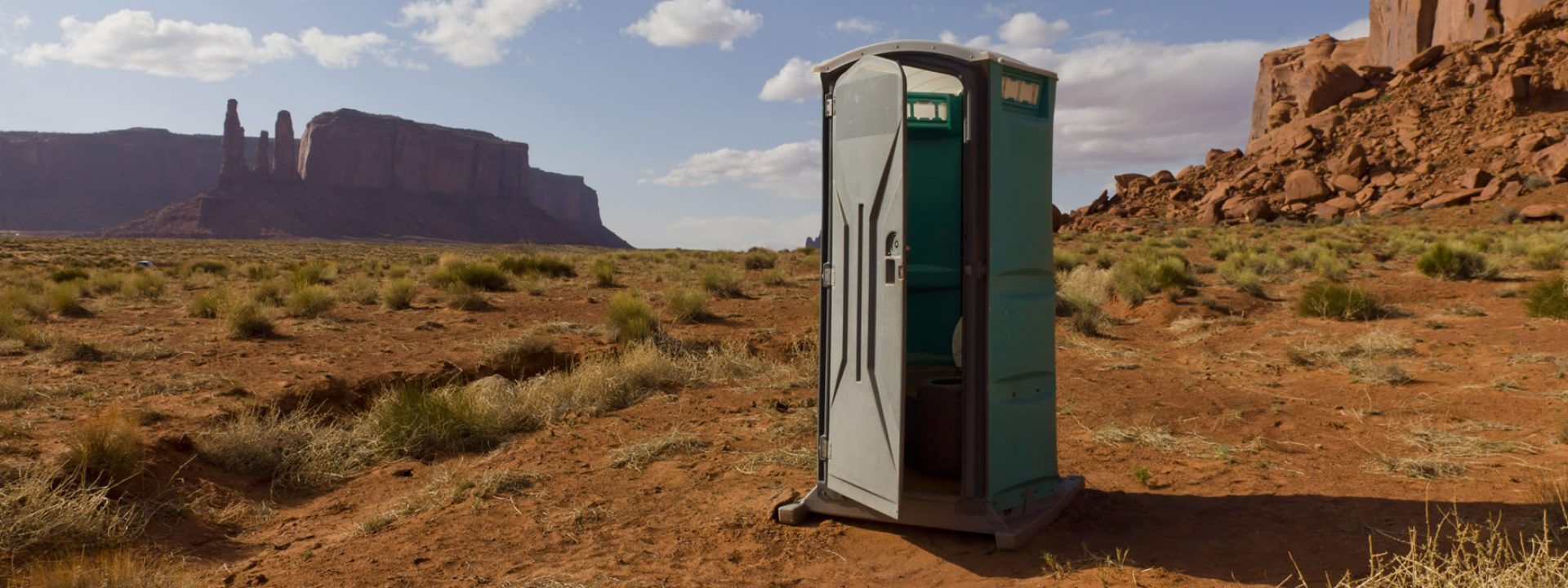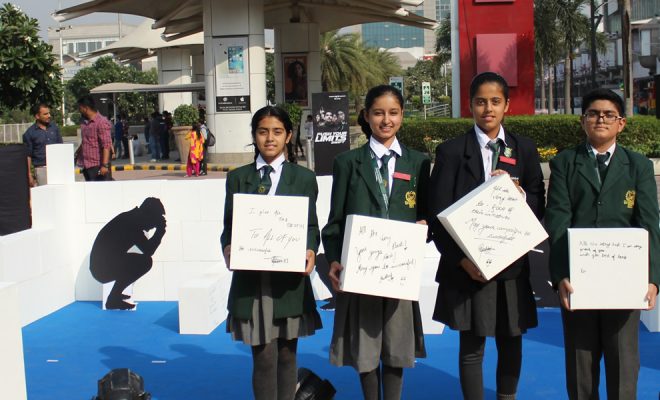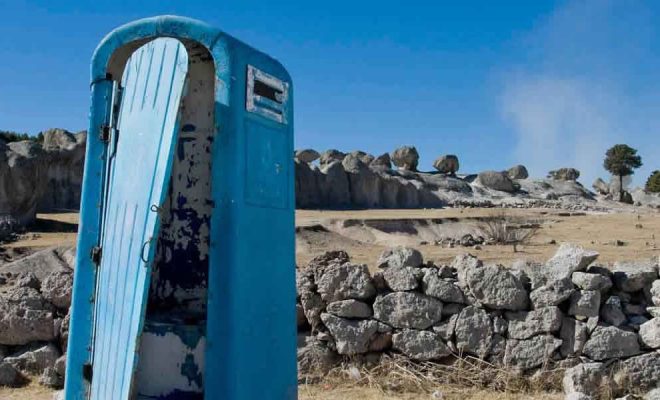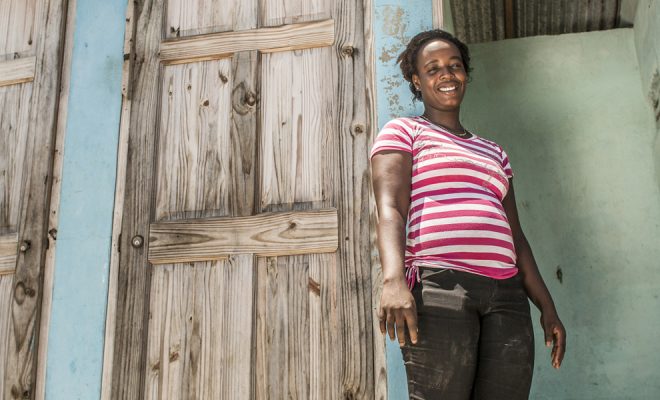Will we end open defecation by 2030 as established by the Sustainable Development Goal no. 6? There are signs that lead to optimism. The decision of many governments to face the problem and the progressive global awareness of citizens has eliminated many of the taboos that had traditionally been linked to this scourge.
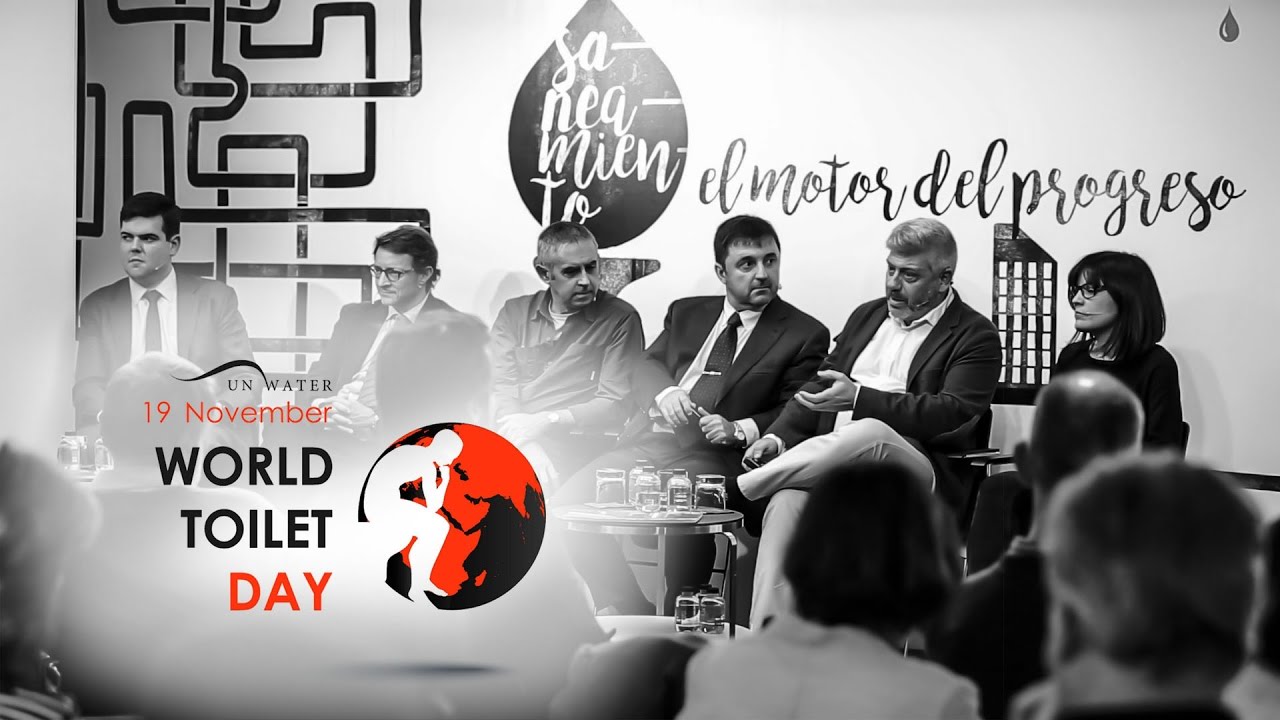
World Toilet Day at the Roca Madrid Gallery.
On the last World Water Day, the We Are Water Foundation carried out a special initiative. In an open space, near a shopping centre in New Delhi, very simple silhouettes of people crouching were installed on the floor. Several banners provided information to pedestrians about the severe problem of open defecation around the world and in India, and they were asked to show their support to raise awareness among their fellow citizens of the serious problem suffered by the second most populated country in the world.
The intention was to simulate the building of a hut made of bricks that had been signed as a sign of support; four walls that would cover the crouching silhouettes thus symbolising the need of placing a water closet within the reach of the entire population. A few hours later, the “building” had been finished and 450 messages covered its walls.
It is meaningful that this event took place in India. The Asian giant, one of the most powerful emerging economies worldwide, is a country with enormous contrasts as it accumulates 60% of the 946 million people that defecate in the open. The implication of its citizens is essential to raise collective awareness in a society that sees that in cities such as Bangalore, named as the capital of the “Indian Silicon Valley”, outside the magnificent city centre, thousands of citizens do not have a toilet.
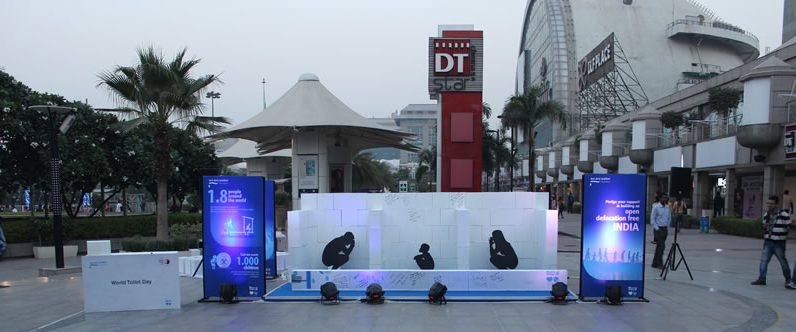
World Toilet Day: awareness raising action of the We Are Water Foundation in New Delhi.
Breaking the psychological taboos
On the other hand, the round table Sanitation: the engine of progress that was organised by the We Are Water Foundation at the Roca Madrid Gallery, set out the relevance of sanitation from a historic point of view while laying out the importance of education to achieve the sustainability of any infrastructure. Education is also the best antidote for the still existing taboos regarding hygienic practices. Five experts in sanitation took part in the debate, which was moderated by David Escobar, founding partner of iAgua. Among them, the photographer Siqui Sánchez, responsible of the project Toilet Planet, declared: “Photography is a good tool to provide visibility to the problem, we need to stop sanitation from being a taboo, and we also need to raise awareness of the problem. Only then will we be able to search for solutions to end the lack of access to sanitation.” His photographs prove it and they are the culmination of a year that ends with optimism.
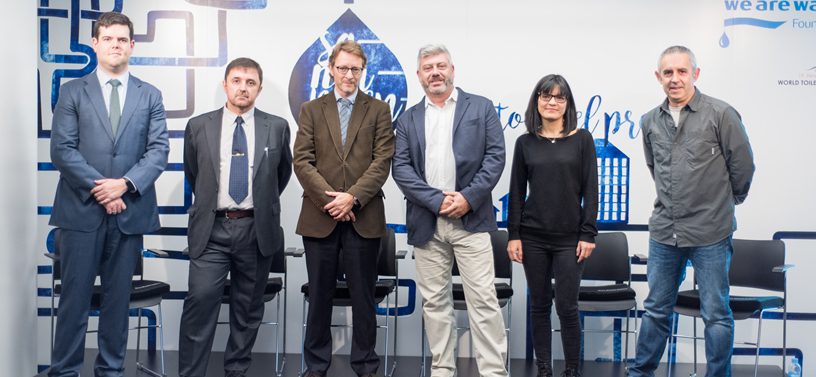
From left to right: David Escobar, moderator and partner of iAgua; Fernando Espejo, Technical Engineer of Public Works; Xavier Torras, director of the Foundation; Angel Morillo, archaeologist; Aniza García, lawyer and former member of the Water and Sanitation Cooperation Fund; and Siqui Sánchez, professional photographer.
Governments and institutions, necessary leaders
At the round table it was also evident that it has always been more difficult to involve institutions in something that is more expensive and complex than simply providing access to water and for this reason sanitation has also been called “the poor brother of water.” Moreover, some national and local governments have found it difficult to face the problem of open defecation; not only due to a matter of prestige, but because they do not want to admit the socially unjust situation some of their communities are suffering. In this way, the example of India, where its prime minister Narendra Modi has personally supported the programme Swachh Bharat Abhiyan, is encouraging as it breaks the most important taboo the international community has had to fight against in the process to achieve total access to sanitation.
Another example can be found in the government of Cambodia, a country also suffering the lack of sanitation, which started the programme Rural Sanitation and Hygiene two years ago, also with the personal involvement of the prime minister Hun Sen. In Africa, governmental programmes have also been developed in Nigeria, Ghana, Mali and Burkina Faso, under the initiatives of the WHO and UNICEF, the UN agency for childhood, which has been denouncing for years that the lack of sanitation causes the spreading of multiple infectious diseases, such as diarrhoea, which causes the death of 1000 children every day.
The slogan of the World Toilet Day this year, “Toilets and employment,” focuses on the difficult economic situation of those communities that lack basic sanitation and precisely this has been the wake-up call for most governments that are getting involved. There is an international awareness of the fact that the lack of basic sanitation is not only a hygienic and environmental problem: it is also a barrier for development in every sense of the word; it is a barrier from the social point of view, as childhood diseases deconstruct families and communities, and also from the economic point of view, as more than 1.7 billion dollars are spent every year in the treatment of water-borne infectious diseases. The problem has also a social side, fully affecting women and girls. Those who lack the privacy of a toilet suffer continuous sexual assaults and thefts and the teenagers that menstruate in schools that do not have suitable toilets tend to miss classes those days.
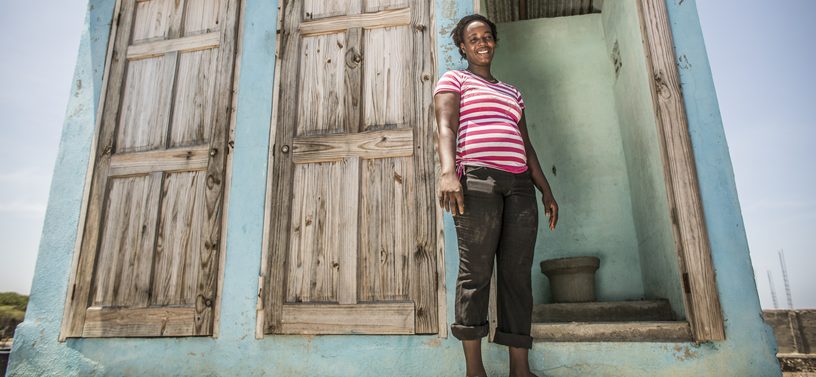
The access to private latrines is an important step for the safety of millions of women around the world. ©Shiho Fukada Panos Pictures Water & Sanitation for the Urban Poor_
Latrines can generate wealth, if we reinvent them
The most important problem faced by action plans is that most of those who defecate in the open do not have running water and practically none of them has access to a sewage system as it is non-existent. This is evident in the rural areas where this terrible practice is a part of the ancient culture of the population. For example, 67% of the homes in rural areas in India do not have a toilet and have never had it.
How can it even be considered that people may have hygienic and sustainable toilets without running water and without sewage systems? Some projects, such as those which have responded to the challenge of the Bill & Melinda Gates Foundation, Reinvent the Toilet Challenge (RTTC), try to create an independent toilet unit that does neither need an external water supply nor access to the sewage system or a connection to the mains.
These projects advance at a good pace, such as the RTI Internacional, supported by the We Are Water Foundation and with the participation of the Roca Design Center. It is a system that turns human waste into biofuel and disinfected non-drinking water that is used to wash down the latrine. This latrine is the base of the creation of units that apart from improving the hygienic and social conditions also provide an extra benefit to the community, which can make the most of the waste that used to condemn it to unhealthiness. Technology advances and although it is not always the solution, it indicates a possible route to be followed in areas where the construction of a sewage system linked to the access of water is unthinkable in the short and medium term.
But it is clear that investing in latrines, manufacturing and taking sanitation systems to areas in need is not enough, it is essential to create culture: to familiarize potential users with them, so that they integrate latrines in their everyday space; and to create culture it is also necessary to invest in education.
Toilet Planet: the toilet tells our history
“As opposed to what many people think, there is not only one design for a toilet. Throughout history, societies of all places and all times have found hundreds of solutions for the same problem.” The photographs of Siqui Sánchez exhibited at the project Toilet Planet show that the toilet is no longer taboo and has become culture. This is good news. Here you may find a sample.
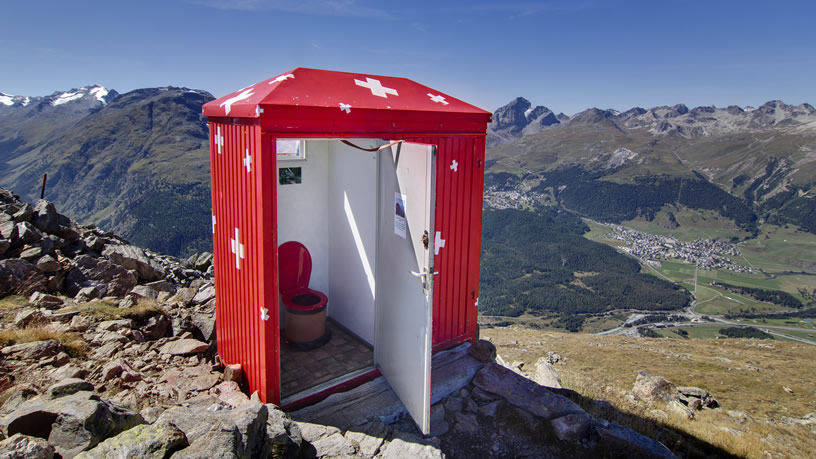
Toilets near Segantini hut in the Muragl valley, Graubunden canton, Switzerland. Located in what is usually known as “a unique setting”, the view of the Bernina mountain range and the Piz Palü is breathtaking. Made in Switzerland 100%. ©Siqui Sánchez. @siquisanchez
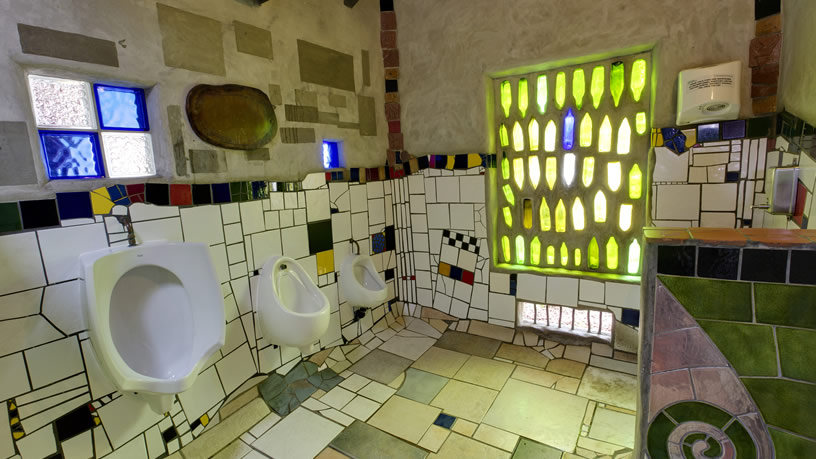
Hundertwasser toilets. Kawakawa. New Zealand. ©Siqui Sánchez. @siquisanchez
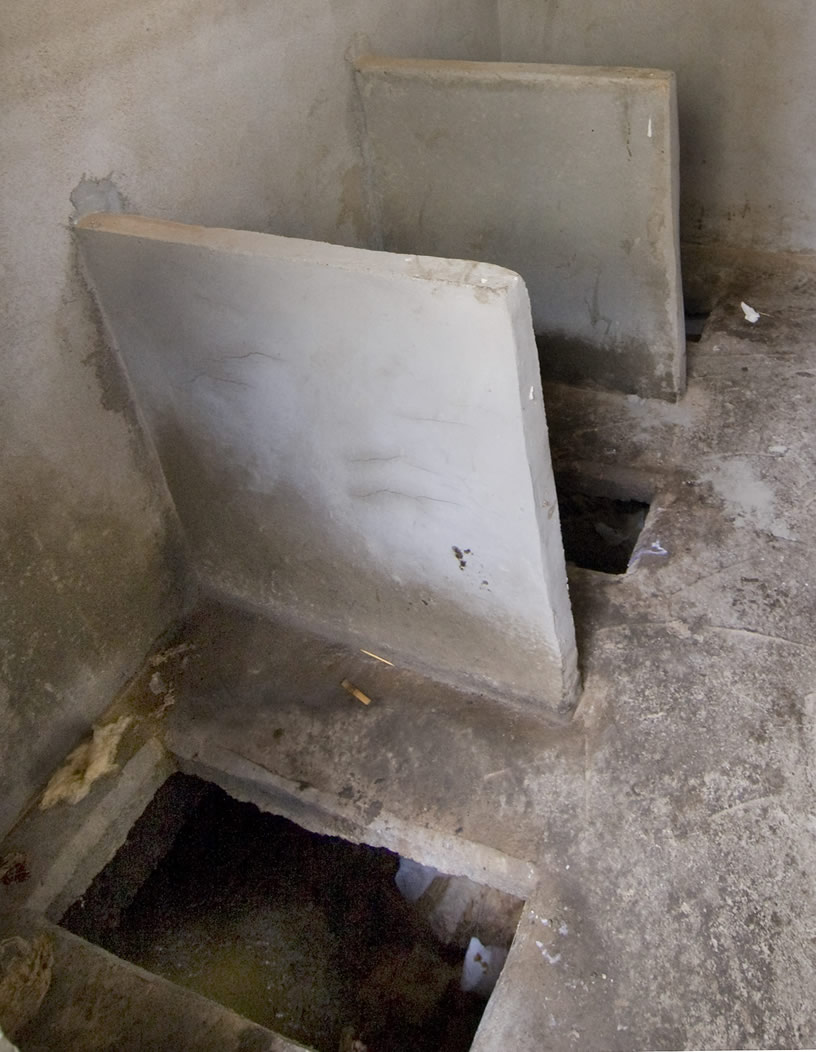
A public toilet in the prefecture of Shigatse, Tibet. Cleanliness may be improved, the safety of the user is precarious, the concern for design, non-existent. Another factor that has not been taken into consideration by the builders is privacy, although this is a step forward when compared to many other toilets in China where there is no separation. ©Siqui Sánchez. @siquisanchez
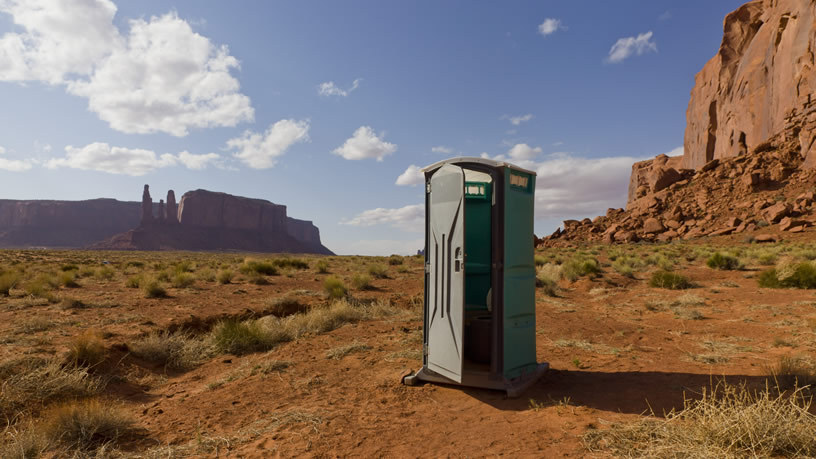
Monument Valley Navajo Tribal Park. Arizona, USA. ©Siqui Sánchez. @siquisanchez

Watch the interview with Siqui Sánchez


